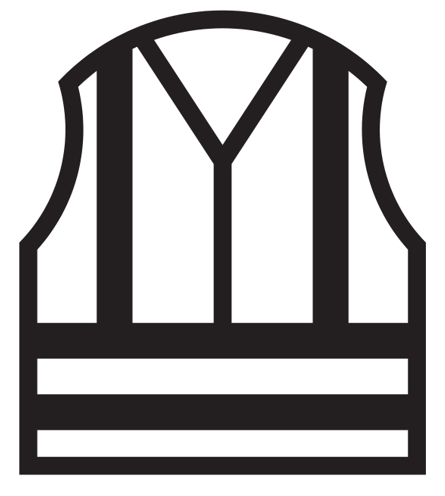

EN ISO 20471 – High-visibility protective clothing
The standard specifies requirements and testing methodologies for visibility clothing, which make the user visible in all high-risk situation, regardless of lighting conditions.
Design requirements
The standard requires that Hi-Vis workwear clothes must be designed in a uniform way. This takes into consideration placement of reflective bands and fluprescent material. The requirements depend on which part of the body the garment is supposed to cover (the torso, torso and arms, torso and legs, only legs, or garments that cover torso, arms and legs). Reflective bands and fluorescent material must be equally divided in the front and back of the garment with a maximum discrepancy of 10%.
Requirements for textiles
The fluorescent fabric is required to maintain its fluorescent properties even after a number of washing cycles. For fabric in a contrasting colour, there is a requirement for colour fastness, and for the reflective material there is a requirement that the reflective properties are retained even after washing. The table shows the minimum area per garment for fluorescent textile and reflective material, measured in m2.
Textile Fluorescent material
Class 3:
0,80
0,50
Class 1:
0,14
Textile Reflective material
Class 3:
0,20
Claas 2:
0,13
Class 1:
0,10
User information
Class 3 is the highest class. All Class 3 garments must cover the torso, and have at least either arms or long legs with reflective material/tape. Several garments can be certified together as a combination, for example jacket and trousers, to achieve a higher class. This is specified on the washing label on the garment. The fluorescent and reflective parts of the garments must not be covered by other garments during use. Please note that the size of the logo or embroidery may affect the class the garment is certified to.
This is only an excerpt from the standard, subject to errors. For the complete and latest version of the standard, visit standard.no
Last update March 2024
